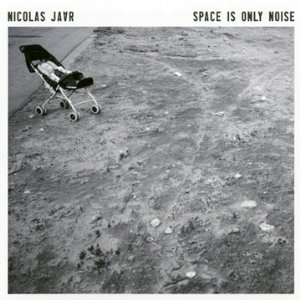So it goes. The random series of absurd coincidences we normally label existence has once again struck by releasing Nicolas Jaar’s debut LP, Space is Only Noise, only a few weeks after the release of James Blake’s much hyped self-titled debut. Both are young men in their early 20s. Both have enjoyed enormous amounts of attention off the back of just a few early club singles, EPs and remixes. And both have now released debut LPs littered with tracks that offer little for traditional club environments, instead preferring to explore the use of empty spaces while using their own voices to fill in the gaps.
Job done, dots connected then. But, a few spins of Space is Only Noise reveals a far richer, more versatile sonic palette then the mix of nu-folk, white soul and dubstep squiggles that make up the bulk of Blake’s underwhelming debut. Where Blake’s love of Bon Iver’s indie-folk warblings is hard to miss beneath his fondness for pitch-shifting, Jaar displays a vision on Space is Only Noise that, in coupling a love of Erik Satie, Mulatu Astatke and fellow Chilean ex-patriot Ricardo Villalobos with a healthy disregard for musical convention, looks to far more adventurous horizons.
The result is a formidable debut. One that focuses on the subdued push and pull of tension from early singles like ‘The Student" and smoothly applies it to the larger canvas of an LP. It also almost completely eschews the slow house beats that helped contribute to Jaar’s meteoric rise within more forward thinking dance circles.
Space is clearly the place for Jaar and he makes it known on opener ‘Etere’ and its follow-up, ‘Colomb.’ The former is a piece of musique concrete, with the sounds of lapping water and film dialogue prefacing a series of resonating piano tones and electronic clicks and whirs. The latter treads into a smoother realm of spartan electronic soul that keeps the emotive grand gestures to a haunting minimum.
Sprinkled in amongst all this suggested space, though, is a series of more pop driven tracks that double as structural peaks for the record’s sonic architecture. ‘Too Many Kids Ain the Dusk’ revolves around a carefully arranged sequence of strings, electronics and Jaar’s voice, creating in the process a propulsive eeriness that wouldn’t feel out of place in an episode of Twin Peaks – or any of composer Angelo Badalamenti’s other works for David Lynch.
The second climax is ‘Space is Only Noise if You Can See.’ Reminiscent of early cold wave, the track begins with Jaar’s baritone opining that "Space is only noise if you can see" before devolving into a series of echoing voices that are eventually met by a pulsing beat and a sequence of sparse melodies. But even at his most pop, Jaar’s vocals never take centre stage, instead he uses them for texture, liberally sprinkling them on to create a highlight that, for all its avant-hooks, forms an integral part of the album as a whole instead of being the meat for the rest of the filler to desperately cling to.
The rest that follows is an exercise in masterful restraint and sonic experimentation, with ‘Balance Her In Between Your Eyes’ offering a mix of hip-hop beats and Ethio jazz that should feel familiar to any Flying Lotus fans. And it’s perhaps Flying Lotus and the aforementioned Ricardo Villalobos, who serve as far more appropriate counterparts for Jaar than Blake. Both men have carved a niche for themselves thanks largely in part to their maverick sensibilities and a desire to explore dance music and hip-hop beyond the realms of the club or as second fiddle to rappers. Space Is Only Noise follows in their footsteps, but only in so much as it refuses to adhere to the musical paradigms that so many expect. Instead, Jaar creates something unique on Space is Only Noise, something that quietly pushes and challenges the listener while simultaneously making it an utterly captivating and nearly uncategorisable experience that surprises and excites with every listen.


